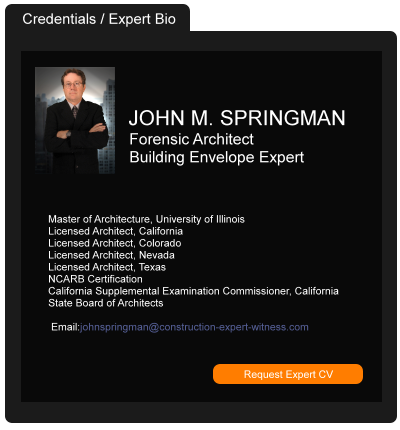Pay-if-Paid Clauses, Nasty, but Enforceable
March 12, 2015 —
Craig Martin – Construction Contractor AdvisorI am preparing for a presentation this week on Troublesome Contract Clauses to the Construction Specifications Institute (“CSI”), Nebraska Chapter. One of the clauses we will be discussing is the dreaded Pay-if-Paid clause, a particularly nasty provision that places the risk of owner’s solvency squarely on the subcontractor’s shoulders. While pay-if-paid clauses can create tremendous problems for subcontractors, they are enforceable.
Pay-if-Paid clauses eliminate the obligation to pay the subcontractor until the general contractor is paid by the owner. Pay-if-paid clauses usually contain something akin to the following phrases:
- payment to subcontractors are “expressly and unequivocally contingent upon receipt of payment from the Owner for the Subcontract Work.”
- the subcontractor “expressly acknowledges that it relies on payment under the Subcontract on the creditworthiness of Owner, not that of the General Contractor.”
- the owner’s acceptance of the work and payment to the General Contractor are “conditions precedent to any obligation of the General Contractor to pay the subcontractor.”
Read the court decisionRead the full story...Reprinted courtesy of
Craig Martin, Lamson, Dugan and Murray, LLPMr. Martin may be contacted at
cmartin@ldmlaw.com
After Fatal House Explosion, Colorado Seeks New Pipeline Regulations
May 10, 2017 —
Mark Shaw - Engineering News-RecordColorado Gov. John Hickenlooper (D) has ordered comprehensive inspections, along with new monitoring and testing procedures, for all oil and gas pipelines located near houses and other buildings across the state. The action follows an April gas explosion in a northern Colorado home that killed two people.
Read the court decisionRead the full story...Reprinted courtesy of
Mark Shaw, ENRMr. Shaw may be contacted at
shawm@enr.com
Coverage for Construction Defect Barred by Contractual-Liability Exclusion
July 30, 2014 —
Tred R. Eyerly – Insurance Law HawaiiRelying upon precedent from the Texas Supreme Court, the Fifth Circuit upheld the District Court's denial of coverage based upon the policy's contractual-liability exclusion. Crownover v. Mid-Continent Cas. Co., 2014 U.S. App. LEXIS 12158 (5th Cir. June. 27, 2014).
The Crownovers entered a construction contract with Arrow Development, Inc. to construct a home. Paragraph 23.1 of the contract contained a warranty-to-repair clause, which provided Arrow "would correct work . . . failing to conform to the requirements of the Contract Documents." After the work was completed, cracks began to appear in the walls and foundation of the Crownovers' home. Additional problems with the heating, ventilation, and air conditioning system caused leaking in exterior lines and air ducts inside the home.
When Arrow refused to correct the problems, the Crownovers initiated arbitration. The arbitrator found that the Crownovers had a meritorious claim for breach of the express warranty to repair contained in paragraph 23.1 of the construction contract. Damages were awarded.
Read the court decisionRead the full story...Reprinted courtesy of
Tred R. Eyerly, Insurance Law HawaiiMr. Eyerly may be contacted at
te@hawaiilawyer.com
Professional Malpractice Statute of Limitations in Construction Context
June 26, 2023 —
David Adelstein - Florida Construction Legal UpdatesIn an interesting dichotomy, which statute of limitations applies to professional malpractice claims relating to construction claims, i.e., in the construction context?
Is it the two year statute of limitations in Florida Statute s.
95.11(4)( a) that governs professional malpractice claims or is it the four year statute of limitations in Florida Statute s.
95.11(3)(c) that governs actions “founded on the design, planning, or construction of an improvement toot real property”? This dichotomy led the appeal in American Automobile Ins. v. FDH Infrastructure Services, LLC, 48 Fla.L.Weekly D1091a (Fla. 3d DCA 2023).
This case sadly involved a construction accident that led to deaths. A contractor was engaged to install an antenna on an existing television tower. The contractor hired an engineering firm “to perform a structural analysis as to the stability and weight-bearing capacity of the tower. [The engineer] was contractually obligated to assess the proposed rigging plan…to lift the loads necessary to construct the antenna.” FDH Infrastructure Services, supra. Unfortunately, after the installation of the antenna commenced, the rigging components failed resulting in workers falling to their deaths. After insurers paid out benefits, they sued the engineering firm under equitable and contractual subrogation theories. The engineering firm moved for summary judgment arguing the subrogation claims were barred by the professional malpractice two year statute of limitations in section 95.11(4)(a). The trial court agreed and granted summary judgment in favor of the engineering firm.
Read the court decisionRead the full story...Reprinted courtesy of
David Adelstein, Kirwin Norris, P.A.Mr. Adelstein may be contacted at
dma@kirwinnorris.com
Fifth Circuit -- Damage to Property Beyond Insured’s Product/Work Not Precluded By ‘Your Product/Your Work Exclusion’
January 24, 2022 —
Anthony L. Miscioscia & Marianne Bradley - White and Williams LLPOn January 11, 2022, the United States Court of Appeals for the Fifth Circuit issued its decision in Siplast, Incorporated v. Employers Mutual Casualty Company, 2022 U.S. App. LEXIS 795 (5th Cir. Jan. 11, 2022), finding that an insurer had a duty to defend its insured in a construction defect case where the underlying complaint alleged damage to property beyond the product and work of the insured.
Siplast, Inc. (Siplast) had contracted with the Archdiocese of New York (the Archdiocese) to install a roof membrane system at a high school in the Bronx, New York. Id. at *1. As part of the contract, Siplast guaranteed that the roof membrane system would remain in a watertight condition for at least twenty years. Id. at *2. If it did not, Siplast would repair the roof membrane system at its own expense. Id.
Several years after the installation, the Archdiocese observed water damage in the ceiling tiles at the high school. Id. The Archdiocese contacted Siplast, who attempted to repair the damage and prevent further leaks; however, leaks and resultant damage continued to occur. Id. Siplast subsequently refused to make any more improvements to the roof. Id.
Reprinted courtesy of
Anthony L. Miscioscia, White and Williams LLP and
Marianne Bradley, White and Williams LLP
Mr. Miscioscia may be contacted at misciosciaa@whiteandwilliams.com
Ms. Bradley may be contacted at bradleym@whiteandwilliams.com
Read the court decisionRead the full story...Reprinted courtesy of
Harmon Hotel Construction Defect Update
July 18, 2011 —
CDJ STAFFCoverage of the ongoing litigation concerning the Harmon Hotel continues to proliferate. Architectural Record and a number of other news outlets continue to provide additional details and coverage of the matter. Chief among the conditions alleged are improperly installed reinforcing steel inside link beams on 15 floors. MGM Claims that the conditions amount to hundreds of millions of dollars in damages, while Perini (the builder) indicated in a July 12th statement that the buildings problems are related to the design, and the they are “fixable.”
�There is significant speculation that MGM Resorts International isn’t interested in repairing the hotel due to a glut of hotel rooms attendant to the troubled economy. In a statement Tuesday Perini reportedly stated that “Repairing and opening the Harmon would only create a greater glut of unused hotel rooms for MGM,” “If market conditions were better and MGM found that demand existed for the Harmon hotel rooms, MGM would not be claiming that the Harmon is unstable.”
�MGM asserts that Perini failed to ”properly construct” the project. Clark County’s Department of Development Services has reportedly asked MGM to provide a plan to fix the project by August 15th.
�The Harmon is part of the $8.5 billion CityCenter project that opened in the fourth quarter of 2009 and is jointly owned by MGM Resorts and Dubai World.
�Prior reports indicated that the owner (MGM) had considered razing the entire project. The future of the project remains uncertain.
Read the court decisionRead the full story...Reprinted courtesy of
Fee Simple!
November 11, 2024 —
Daniel Lund III - LexologyFollowing the grant of summary judgment by a Nebraska federal court on a construction claim, the prevailing subcontractor sought recovery of attorney’s fees, but received pushback from its opponent based upon the Federal Rules of Civil Procedure.
The general contractor urged “that attorney’s fees are ‘special damages’ that must be specifically pleaded within a complaint under Federal Rule of Civil Procedure 9(g).” The GC said that a prayer for “a judgment for… costs, interest, and attorney’s fees be entered” – without further asserting a statutory or factual basis for the recovery – is insufficient. The subcontractor shot back that “it complied with the requirements of Rule 9(g) because its prayer for relief expressly referenced attorney’s fees, and the request for such fees was based on the facts asserted in the pleadings themselves.”
Read the court decisionRead the full story...Reprinted courtesy of
Daniel Lund III, PhelpsMr. Lund may be contacted at
daniel.lund@phelps.com
David M. McLain to Speak at the CLM Claims College - School of Construction - Scholarships Available
July 28, 2016 —
David M. McLain – Colorado Construction LitigationI am happy to have been asked to serve as an instructor at this year's CLM Claims College – School of Construction, to be held at the Marriott Baltimore Waterfront in Baltimore, Maryland on Wednesday, September 7, 2016 through Saturday, September 10, 2016.
Overview of the 2016 School of Construction
Construction claims present myriad complexities in claim handling. Construction defect lawsuits are often multi-party cases with cross claims and third-party claims between and among the numerous defendants. Insurance coverage is intertwined and complex due to the interplay of primary, excess, wrap, and additional insurers for the numerous defendants. All this is further complicated by statutes and regulations, inconsistent case law and procedural peculiarities throughout the United States. The economic stakes are high as the damages claims can be in the multi-millions.
Read the court decisionRead the full story...Reprinted courtesy of
David M. McLain, Higgins, Hopkins, McLain & Roswell, LLCMr. McLain may be contacted at
mclain@hhmrlaw.com


































































